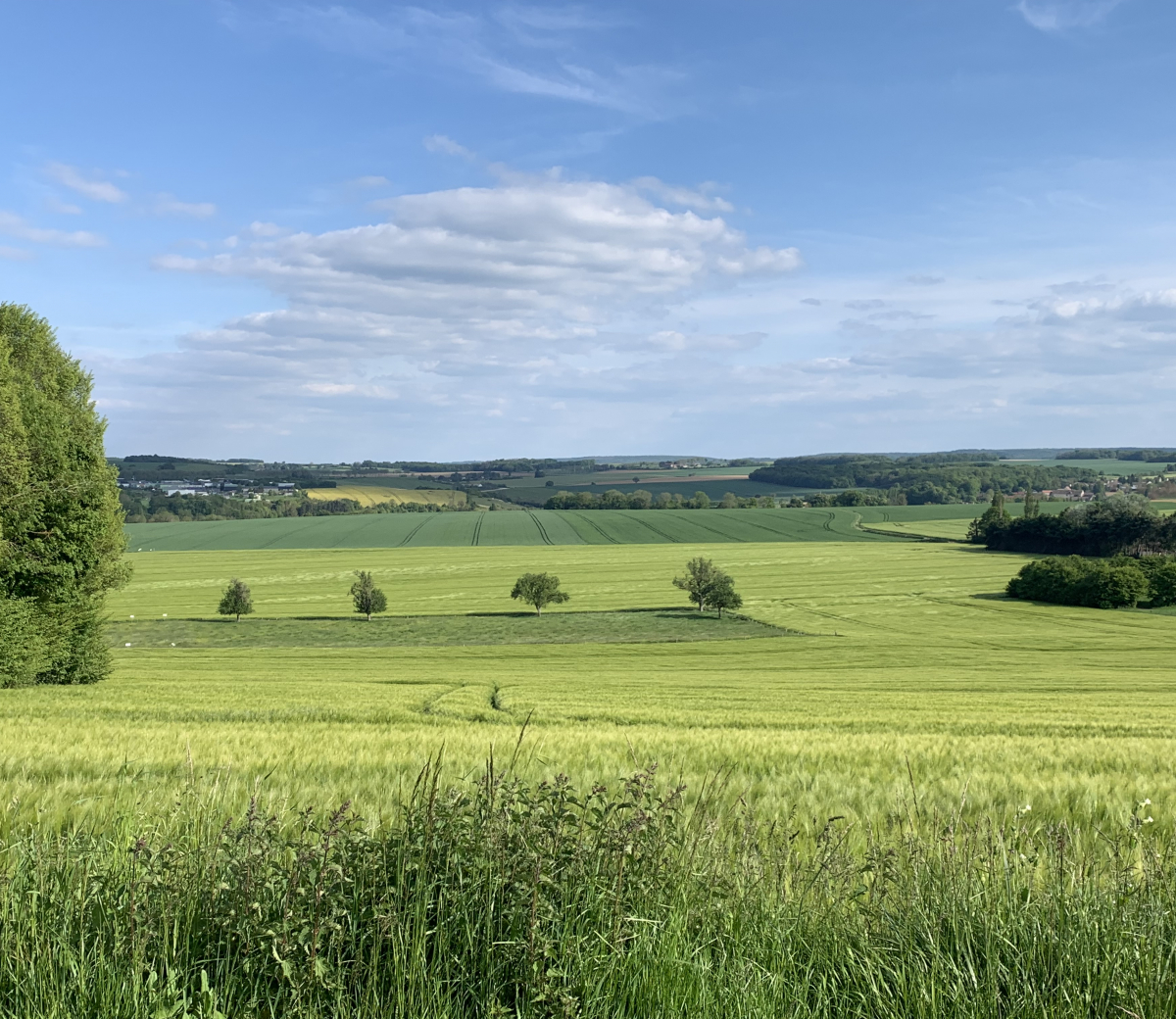A preserved territory near Paris
The Ile-de-France countryside
The plateau is notched by valleys of its own (Aubette de Magny, Aubette de Meulan, Montcient, Viosne, Sausseron) with contrasting profiles: some, such as the Viosne, are long, narrow and punctuated with smaller valleys, while others, such as the Aubette de Magny, widen out into alluvial plains. The hills of Arthies, Rosne and Marines, aligned in three groups, raise up their wooded silhouettes above the plateau. The heritage value of the Vexin Français lies in the diversity of its natural habitats (damp valley-bottom environments, a network of sources and springs, prairies and orchards, limestone slopes, wooded hills). The heritage value of the Vexin Français lies in the diversity of its natural habitats (damp valley-bottom environments, a network of sources and springs, prairies and orchards, limestone slopes, wooded hills) but also the presence of a "grand site d’intérêt national" (a protected site of national interest, the hillsides and meanders of the Seine) and protected plant species. Certain emblematic species, such as bats and little owls, are subject to particular study.

Villages with exceptional heritages
Humans have always left their mark on the landscape by constructing monumental heritage, of which churches and castles are the most visible remaining sign. Different styles of architecture coexist, bearing witness to ancient occupation of the land and the various periods of construction. Today, almost all the area’s villages have one or more protected historical monuments. Equally notable as a counterpoint to this remarkable architecture is the simplicity of the rural heritage of the Vexin Français, whose delicately coloured materials play subtly with the light. The harmony of the housing is reinforced by the use of locally sourced building materials such as stone, clay and plaster. The colours of the villages blend perfectly with those of the landscape. The villages have retained an essentially agricultural vocation from their origins, built on the nature of the soil. The structure of the housing is characterised by a concentration in villages gathered around farms in the form of a quadrilateral, closed to the exterior. The Vexin Français reveals landscapes punctuated by stone buildings (mills, fountains, pigeon-lofts, village washbasins etc.), expressing local traditions and customs. It was the first Regional Natural Park to receive "Pays d’art et d’histoire" (land of art and history) certification from the Ministry of Culture and Communication.

From a generous but fragile nature
In the valley bottoms stretch wet grasslands, alkaline marshes and reed beds where many birds, insects and amphibians find refuge. On the decline since the 1950s, these wet zones are now subject to priority action programmes. Woods and forests cover more than 10,000 hectares, 15% of the area of the park. The largest wooded stretches cover the hills (Arthies, Rosne, Marines) and the slopes of the plateau. Oak, ash, chestnut and hornbeam are the most common species. Limestone grassland occupies the sides of the valleys that criss-cross the plateau. These environments include short grasses, prairies with higher, denser plant cover and fallow land left behind when farming was abandoned. As it hollowed its bed through the soft chalk of the slopes, the Seine brought alluvial deposits carried from further upstream, forming the higher and lower alluvial terraces of the Guernes and Moisson meanders. Most of these remarkable natural spaces are only accessible through guided group visits. The areas that remain freely accessible, crossed or edged with walking paths, are fragile.




